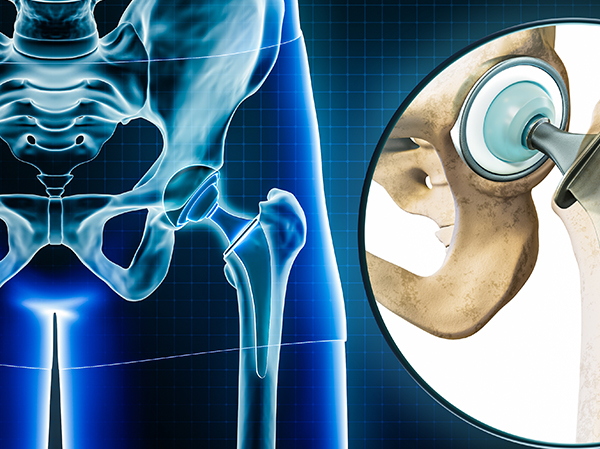
Anterior Hip Replacement versus Hip Resurfacing: Why Anterior Hip Replacement Is the Better Choice for Most Patients
At Palmetto Bone and Joint, we are committed to providing patients with the most advanced, evidence-based surgical solutions available for joint pain and dysfunction. When it comes to treating hip arthritis and degenerative hip conditions, two common procedures are often discussed: anterior hip replacement and hip resurfacing.
While both procedures aim to relieve pain and restore mobility, there are important differences in their approach, risks, and outcomes. After careful consideration of the current research, surgical outcomes, and patient satisfaction, we believe that anterior hip replacement offers a superior solution for most patients—with faster recovery, fewer complications, and more reliable long-term results.
What’s the Difference Between Anterior Hip Replacement and Hip Resurfacing?
Before diving into why one procedure is often better than the other, it’s helpful to understand what each surgery entails:
Anterior Hip Replacement
Anterior hip replacement is a minimally invasive surgical approach to total hip arthroplasty. The procedure involves replacing the damaged ball-and-socket components of the hip joint with prosthetic parts—typically made of a combination of ceramic, polyethylene, and titanium alloys. What sets this approach apart is the surgical pathway: the anterior approach accesses the hip joint from the front of the body, preserving the surrounding muscles by working between them rather than cutting through them.
Hip Resurfacing
Hip resurfacing is an alternative to total hip replacement, typically marketed to younger, more active patients. Rather than removing the entire femoral head (the ball of the hip joint), hip resurfacing involves trimming and capping the femoral head with a metal covering and replacing the socket with a metal cup. While preserving more bone initially, this procedure introduces a metal-on-metal articulation, which comes with unique risks.
Why Anterior Hip Replacement Is the Better Choice
1. Minimized Muscle Damage
One of the biggest advantages of anterior hip replacement is the muscle-sparing approach. Traditional hip replacements and hip resurfacing typically require detachment or cutting of muscles and tendons to access the joint. In contrast, the anterior approach uses a natural interval between muscles, allowing the surgeon to reach the joint with minimal disruption to soft tissues.
This muscle preservation leads to:
-
Faster recovery times
-
Less postoperative pain
-
Improved gait and mobility
-
Decreased need for assistive devices like walkers or canes
Hip resurfacing, despite preserving bone, does not preserve muscle in the same way. It often requires more extensive exposure and dislocation of the femoral head, increasing trauma to surrounding tissues and delaying recovery.
2. Faster Recovery and Return to Activity
One of the most celebrated benefits of anterior hip replacement is rapid recovery. Many patients are walking with assistance on the same day of surgery and resume normal daily activities within a few weeks.
In contrast, hip resurfacing can involve a longer and more painful recovery period due to the need to cut through muscle and the risk of femoral neck fractures (more on that below).
With anterior hip replacement, patients can typically:
-
Return to driving within 1–2 weeks
-
Resume low-impact sports like cycling and swimming within 4–6 weeks
-
Enjoy high levels of activity, including hiking, tennis, and even skiing, often within 3 months
3. Superior Implant Longevity
Modern implants used in anterior hip replacements are engineered to last. Many leading manufacturers now report implant longevity exceeding 30 years based on lab testing and early clinical results.
On the other hand, hip resurfacing devices have shown limited durability in many patients. Over time, the metal-on-metal interface wears down, leading to:
-
Loosening of the implant
-
Need for revision surgery
-
Damage to surrounding bone and tissue
In fact, many major orthopedic implant manufacturers have scaled back or discontinued their metal-on-metal hip resurfacing systems due to long-term complications and patient safety concerns.
4. Avoiding Metal-on-Metal Complications
One of the most concerning issues with hip resurfacing is its reliance on metal-on-metal (MoM) articulation. This design, which once seemed ideal for durability and wear resistance, has proven problematic.
As the metal ball and socket move against each other, they release microscopic metal particles and ions into the body. Over time, this can lead to:
-
Adverse local tissue reactions (ALTR), including inflammation, pseudotumors, and necrosis
-
Systemic metal toxicity, potentially affecting the kidneys, heart, and nervous system
-
Chromium and cobalt ion buildup in the bloodstream
-
Higher rates of revision surgeries
Anterior hip replacement uses ceramic-on-polyethylene or ceramic-on-ceramic interfaces, which have been shown to be safer and more durable without the risks of metal ion generation.
5. Lower Risk of Femoral Neck Fracture
Hip resurfacing preserves more of the femoral bone, but at a cost. The femoral neck—the narrow portion just below the ball of the hip joint—remains intact, and stress from the implant can lead to fractures in this vulnerable area.
Femoral neck stress fractures can be devastating, often requiring urgent revision to a total hip replacement and leading to prolonged recovery.
In anterior hip replacement, the femoral head and neck are removed and replaced with a durable, stable prosthesis, eliminating the risk of femoral neck fracture altogether.
6. More Consistent Long-Term Outcomes
Although hip resurfacing has been touted for younger patients who wish to stay active, recent research shows that anterior hip replacement offers equally strong outcomes for highly active individuals—with fewer risks and better long-term predictability.
Patients who undergo anterior hip replacement report:
-
High satisfaction rates
-
Better joint mechanics and range of motion
-
Greater ability to return to sports and active lifestyles
Moreover, the technology behind anterior hip implants continues to improve, offering customized sizing, robotic-assisted placement, and more advanced materials.
Who Should Consider Hip Resurfacing?
While anterior hip replacement is the best choice for the vast majority of patients, hip resurfacing may still be an option for a small subset of individuals, such as:
-
Younger males (typically under 30) with large bone structures
-
Patients with excellent bone quality and no metal allergies
However, even in these cases, the long-term risks and potential complications must be weighed carefully. At Palmetto Bone and Joint, we evaluate each patient thoroughly to determine the safest and most effective approach.
Conclusion: A Safer, Smarter Path to Hip Health
When it comes to choosing between anterior hip replacement and hip resurfacing, the evidence is clear: anterior hip replacement offers a safer, faster, and more reliable solution for most patients. With reduced muscle damage, no metal-on-metal risks, faster recovery, and implants designed to last over 30 years, it’s the clear choice for long-term joint health and a return to full activity.
If you or a loved one is considering hip surgery, let our team at Palmetto Bone and Joint guide you through your options with expertise, compassion, and a commitment to your best outcome.
Contact us today to schedule a consultation and take the first step toward a pain-free future.



